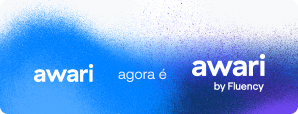UX Design Web3: UX Design no Contexto do Web3
UX Design Web3 is crucial for the success of applications in the Web3 era.
Glossário
UX Design Web3: Principles and Best Practices
UX Design Web3 is a discipline that focuses on creating user experiences for the Web3, combining the principles of user experience design with the unique concepts and challenges of the Web3. The UX Design plays a crucial role in the adoption and success of Web3, ensuring accessibility, trust, education, feedback, personalization, and coherence of the interfaces and user experiences. When implementing UX Design in the context of Web3, it is important to consider the unique challenges of this new era of the internet and strike a balance between technological innovation and creating intuitive and efficient user experiences.
Principles of UX Design Web3
In recent years, UX Design has become increasingly relevant for digital product development. In the context of Web3, this discipline becomes even more crucial, as user experience is one of the main differentiators of decentralized applications. In this article, we will explore the principles and best practices of UX Design Web3, which can be applied to your projects to ensure an exceptional user experience.



1. Understand the context of Web3:
- The Web3 represents a new phase of the internet, based on decentralized technologies such as blockchain and smart contracts.
- Web3 users have greater control over their own data and financial transactions, which requires UX Design adapted to this reality.
- Understanding the characteristics and specificities of Web3 is essential to ensure an effective and secure user experience.
2. Simplify complexity:
- Web3 introduces complex concepts and terminology, such as tokens, wallets, and cryptographic transactions.
- It is essential to simplify these complex concepts and make them understandable for non-technical users.
- Use clear and simple language, intuitive graphics, and clear interaction flows to guide the user through the process.
3. Promote transparency and security:
- In Web3, transparency and security are key aspects.
- Inform users about the implications and risks related to the use of decentralized technologies.
- Provide clear information about the transactions performed, operation status, and user activity history.
4. Create an intuitive user journey:
- Map the user journey from the first contact with the product to the completion of the main tasks.
- Design simple and intuitive interaction flows, minimizing the need for complex learning.
- Take into account different user profiles and their specific needs when creating this journey.
5. Optimize performance and scalability:
- Due to the decentralized nature of Web3, application performance and scalability are critical factors.
- Ensure that your application works quickly and reliably, even during times of high demand.
- Perform usability and performance tests to identify possible bottlenecks and improve the user experience.
How to Implement UX Design Web3 in Your Projects
Now that you understand the principles and best practices of UX Design Web3, it’s time to implement them in your projects. Here are some strategies that can help ensure the success of UX Design Web3 in your applications.
1. Research and know your target audience:
- Conduct market research and user interviews to understand their needs, desires, and difficulties.
- Identify the main user profiles and create personas to guide the design process.
- Consider the specific characteristics of the Web3 target audience and adapt the design accordingly.
2. Collaborate with developers and blockchain experts:
- UX Design Web3 requires close collaboration with developers and blockchain experts.
- Share your UX Design knowledge and work together to find effective and innovative solutions.
- Regularly conduct usability tests and ask for feedback from developers to continuously improve the user experience.
3. Use familiar design patterns, but adapt them to Web3:
- Take advantage of design patterns recognized by most users, but adapt them to the peculiarities of Web3.
- Ensure visual and interaction consistency throughout the application, making it familiar and easy to use.
- Integrate Web3-specific design elements, such as transaction notifications and display of cryptocurrency balances.
4. Test and iterate constantly:
- UX Design Web3 is an ever-evolving field, driven by technological innovations.
- Conduct usability tests and iterate based on user feedback to continuously improve the experience.
- Be willing to try new solutions and adapt the design according to the changing needs of your audience.
In summary, UX Design Web3 is a process that requires a deep understanding of the Web3 context, simplification of complexity, transparency, security, intuitive user journeys, and optimization of performance. By implementing these principles and best practices in your projects, you will be creating an exceptional user experience in the context of Web3. Remember to always research, test, and iterate to continuously improve the design and meet the constantly changing needs of users.



Develop your career today! Get to know Awari.
Awari is a complete learning platform that offers individual mentorship, live classes, and career support to help you take your next professional step. Want to learn more about the essential techniques for becoming a relevant and successful professional?
Check out our courses and develop essential skills with a personalized journey, to develop and evolve your resume, your personal and complementary materials developed by market experts!









